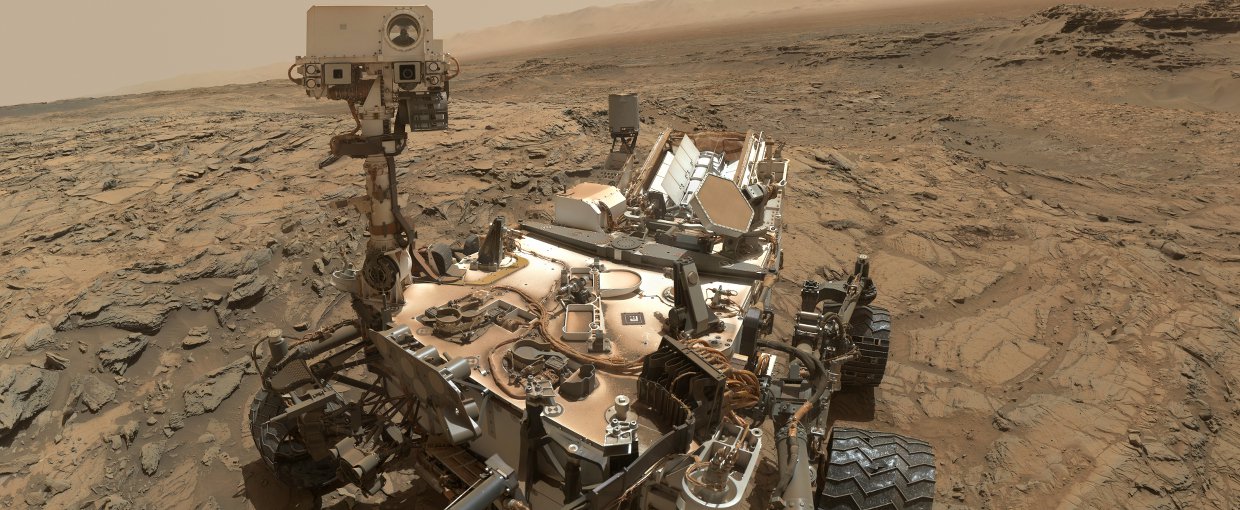
July 26, 2018
Feature Story
Mining Data from Curiosity

This self-portrait of NASA's Curiosity Mars rover shows the vehicle at the "Big Sky" site, where its drill collected the mission's fifth taste of Mount Sharp. Image credit: NASA/JPL-Caltech/MSSS.
NASA’s Curiosity rover, a component of the Mars Science Laboratory mission, has been exploring the surface of Mars since its landing in Gale Crater on Mars on August 6, 2012. Scientists from around the globe are pouring over the data that Curiosity has returned to Earth, seeking clues about the ancient environment of Mars and its potential habitability.
A team of researchers at the University of Arizona (UA) is working with results from Curiosity’s CheMin instrument. This instrument sends beams of X-rays through samples of martian rock to reveal clues about Mars’ chemistry and mineralogy. The UA team includes undergraduate Gordon Downs, who has been working on new ways to analyze data from CheMin. When the analytical software being developed at AU reached the point where it became a working product, Downs was added to the AU team, and he is now helping to analyze the data Curiosity sends back to Earth.
Downs’ work recently featured in an article from UA:
UA Undergraduate Mines Data from Mars Curiosity Rover (University of Arizona).
The Astrobiology Program was involved in all stages of the MSL mission. This included the development of instruments onboard the Curiosity rover, including Sample Analysis at Mars (SAM) and Chemistry & Mineralogy (CheMin).
The Astrobiology Program currently supports researchers involved in Curiosity mission operations and analysis of data from the rover. For more information on Astrobiology in Missions, visit: https://astrobiology.nasa.gov/missions/
Additional Resources:
Curious About Life: Interview With David Blake
My Martian Moment: David Blake Presents CheMin